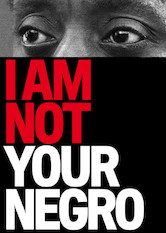Ten Tips for Writing Documentary Narration
After working in the documentary world for 32 years, I’ve compiled ten tips to write compelling voiceover narration. Bottom line: writing for screen is different than writing for print. Enjoy and feel free to share!
Tip #1: BE CONVERSATIONAL. Narration should not sound like a college lecture or an ideologue’s sermon. Be colloquial. It’s OK to use contractions. Where can you pose questions for your viewer? When you’re done writing, read narration out loud to make sure it’s easy to say.
Tip #2: AVOID STARTING sentences with a long participial phrase. Why? People don’t generally talk that way; they write that way.
Instead, put the phrase that is set off by a comma at the end of the sentence. For example, my opening sentence of this newsletter would be narrated like this, “I’ve gathered ten tips to write compelling voiceover narration, after working in the documentary world for 32 years.”
Tip #3: SHORT SENTENCES. Keep sentences short. Like this. Similarly, avoid long phrases set off by commas, which are hard to wrap one’s tongue around. Give your talent a chance to breath… by using ellipses … or “PAUSE” in your script to guide pacing.
As writer Bill Harrington says in Videomaker, “Often, simple pauses can be very effective in highlighting dramatic moments. The narration should reinforce the video, not compete with it.”
Sometimes saying nothing… says it all. Bypass the brain’s executive function and let pictures and music stimulate viewers’ limbic system, especially during dramatic scenes. Harrington warns, “The audience won’t forgive you for intruding on the moment.”
Tip #4: CRAFT VOICE. Is your narration too dull and factual? Save the stats for text cards. (For variety, assign a role to text on screen, such as delivering factual exposition regarding legislation or dates or common nouns; this will take the burden off the narrator and render them less monotonous.)
Rather, use narration to imbue your documentary with a personal “voice”.
Check out the contrasting narration in these three Oscar short-listed hits: the warm cuddly voice of Morgan Freeman in “March of the Penguins” (2005); the tech-friendly voice in “The Internet’s Own Boy” (2014); and the wise, prophetic voice of James Baldwin (read by Samuel L. Jackson) in “I Am Not Your Negro” (2016).
Tip #5: ACTIVE VOICE. For verve, write in the active voice, not passive. “The Armistice was reluctantly signed by the Germans in 1918,” is passive. Leverage drama by using the active tense, “Reluctantly, the Germans signed the Armistice in 1918.”
Tip #6: SAY COW? Avoid “say cow, see cow”, that is, saying in narration exactly what we’re seeing on screen. Let pictures add to the exposition, and vice versa.
For instance, if the narration says, “Black and white dairy cows are popular among farmers,” don’t show a farmer feeding black and white dairy cows. How boring. Present an image that gives more information, such as a cow giving birth, or a calf nursing, or a close up of an electric milking pump.
Tip #7: TITLE FIRST. Here’s an old radio tip: prepare the listener that they’re about to hear a name by preceding it with a title. Otherwise, the name might fly right past them (and they can’t go back and read it).
For example, rather than writing, “Stephen Yale-Loehr contributed to the 21-volume ‘Bible’ of immigration law,” give Stephen a descriptive title, such as “Co-author Stephen Yale-Loehr contributed to the 21-volume ‘Bible’ of immigration law.”
Tip #8: NTK? Scrutinize every line by asking, does the viewer need to know this? PBS producer Jon Else used to mark-up narration scripts with the “NTK?” shorthand. And I’ve seen many essay-style rough cuts slouch under weighty “fun facts” that belong on a film’s website.
My former student Alexis Bloom, director of “Divide and Conquer: The Story of Roger Ailes,” says she had countless criteria for cutting information that would “bore you senseless.” For a look at four very important criteria for making cuts, read my blog “Documentaries are Not Encyclopedias”.
(A corollary: “Don’t tell me shit I already know,” Michael Moore’s Filmmaking Rule #2.)
Tip #9: AVOID JARGON. While we’re on the topics of boredom and condescension, scan for phrases or words the audience may not understand. If you must use jargon, define it, make fun of it, or otherwise risk tainting your documentary with confusion or perceived bias.
Tip #10: TRANSITION. Narration is a god’s gift to filmmakers for succinctly transitioning from one topic to another, one plot point to another, and in and out of soundbites. And I’m not talking about the omniscient “Voice of God” narration style that ruled in the days of WWII journalist Edward R. Murrow.
As a result of backlash to that heavy-handed style, voiceover narration today remains underrated as a storytelling device. Here are four reasons why you might want to use narration in your documentary.
